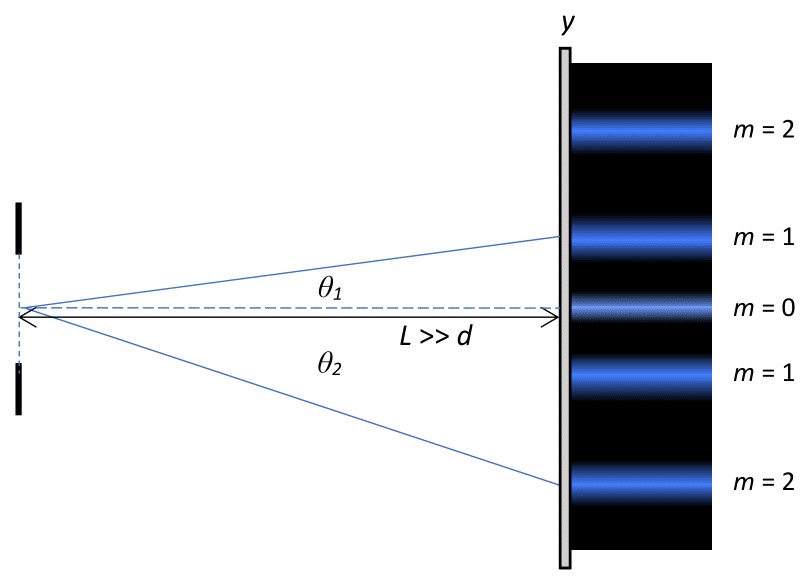Section 18.5 Diffraction Gratings
Diffraction gratings are an optical tool that are made up of many many slits side-by-side, sometimes thousands of slits per millimeter, and allow for the diffraction of light. Diffraction gratings work through multiple-slit interference.
Diffraction gratings are an optical tool that are made up of many many slits side-by-side, sometimes thousands of slits per millimeter, and allow for the diffraction of light. Diffraction gratings work through multiple-slit interference.
When white light travels through a diffraction grating, an interference pattern will show up on the screen. As we have learned, the location of bright and dark spots on the screen depends on the wavelength of the light. So when multiple wavelengths travel through a diffraction grating together, the wavelengths are split up and multiple sets of bands of color can be seen on the screen. When the wavelength is large, the angular displacement on the screen will be larger, as compared to shorter wavelengths.

Exercises Diffraction Grating Activities
Use what you know about multiple slit interference and what you’ve learned about diffraction gratings to answer the following questions.
-
If you have a diffraction grating with 1000 lines per mm, what is the separation between two slits?
-
At what angle will the second-order maximum be if you shine a light through the diffraction grating with a wavelength of 475 nm?
-
What happens to the diffraction pattern if the wavelength increases? If it decreases?
-
Now consider what happens if you have white light passing through your diffraction grating. How does a diffraction grating affect redder colors? How does it affect bluer colors? Predict what you might see on the screen.
